|
Your search criteria found 1300 images Gallery: Universe |
| My List |
Addition Date | Target | Mission |
Instrument
|
Size |

|
1999-11-30 | Black Hole | 925x1197x3 | ||

|
|||||

|
2004-05-27 |
Spitzer Space Telescope |
1600x1200x3 | ||

|
|||||

|
2004-12-09 |
Spitzer Space Telescope |
3000x1688x3 | ||
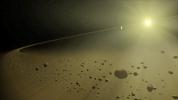
|
|||||

|
2004-12-09 |
Spitzer Space Telescope |
3000x1688x3 | ||

|
|
||||

|
2004-12-09 |
Spitzer Space Telescope |
1386x956x3 | ||

|
|||||

|
2004-12-09 |
Spitzer Space Telescope |
1364x1024x3 | ||

|
|||||

|
2005-01-10 | Vega |
Spitzer Space Telescope |
3000x2400x3 | |

|
|||||

|
2005-01-11 |
Spitzer Space Telescope |
3000x2400x3 | ||

|
|||||

|
2005-02-08 | OTS 44 |
Spitzer Space Telescope |
3000x2400x3 | |

|
|||||

|
2005-02-08 | OTS 44 |
Spitzer Space Telescope |
2580x2010x3 | |

|
|||||

|
2005-03-01 |
Spitzer Space Telescope |
3000x2400x3 | ||

|
|||||

|
2005-04-20 | HD 69830 |
Spitzer Space Telescope |
3200x2400x3 | |

|
|||||

|
2005-04-20 | HD 69830 |
Spitzer Space Telescope |
3000x2400x3 | |
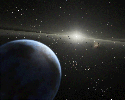
|
|||||

|
2005-10-20 |
Spitzer Space Telescope |
3000x2400x3 | ||

|
|||||

|
2005-11-29 | 55 Cancri | 3000x2400x3 | ||

|
|||||

|
2005-12-20 | IRS 46 |
Spitzer Space Telescope |
3000x2400x3 | |

|
|||||

|
2006-04-05 |
Spitzer Space Telescope |
3200x2400x3 | ||

|
|||||

|
2006-04-05 |
Spitzer Space Telescope |
3000x2400x3 | ||

|
|||||

|
2006-07-24 |
Spitzer Space Telescope |
3200x2400x3 | ||
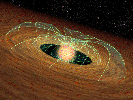
|
|||||

|
2006-08-23 |
Galaxy Evolution Explorer (GALEX) |
3000x2400x3 | ||

|
|||||

|
2006-08-23 |
Galaxy Evolution Explorer (GALEX) |
3000x2400x3 | ||
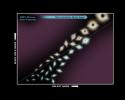
|
|||||

|
2006-10-12 |
Spitzer Space Telescope |
640x479x3 | ||

|
|||||

|
2006-10-12 |
Spitzer Space Telescope |
2400x3200x3 | ||

|
|||||

|
2006-10-26 | Cassiopeia A |
Spitzer Space Telescope |
2400x3000x3 | |

|
|||||

|
2006-12-05 |
Galaxy Evolution Explorer (GALEX) |
3000x2000x3 | ||

|
|||||

|
2006-12-18 |
Spitzer Space Telescope |
644x481x3 | ||

|
|||||

|
2007-01-26 |
Spitzer Space Telescope |
3000x2400x3 | ||

|
|||||

|
2007-01-26 |
Spitzer Space Telescope |
3200x2400x3 | ||

|
|||||

|
2007-02-21 |
Spitzer Space Telescope |
3000x2400x3 | ||

|
|||||

|
2007-02-21 |
Spitzer Space Telescope |
3000x2400x3 | ||

|
|||||

|
2007-03-07 | Z Camelopardalis |
Galaxy Evolution Explorer (GALEX) |
720x487x3 | |

|
|||||

|
2007-03-29 |
Spitzer Space Telescope |
3000x2000x3 | ||

|
|||||

|
2007-03-29 |
Spitzer Space Telescope |
3000x2400x3 | ||

|
|||||

|
2007-04-18 | Rosette Nebula |
Spitzer Space Telescope |
3300x2400x3 | |
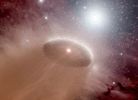
|
|||||

|
2007-05-09 | HD 149026b |
Spitzer Space Telescope |
638x479x3 | |

|
|||||

|
2007-07-24 |
Spitzer Space Telescope |
3000x2400x3 | ||

|
|||||

|
2007-08-06 | CL0958+4702 |
Spitzer Space Telescope |
3000x2400x3 | |

|
|||||

|
2007-08-06 | CL0958+4702 |
Spitzer Space Telescope |
3000x2400x3 | |

|
|||||

|
2007-08-29 | NGC 1333 |
Spitzer Space Telescope |
3200x2400x3 | |

|
|||||

|
2007-10-03 |
Spitzer Space Telescope |
3000x2400x3 | ||

|
|||||

|
2007-10-25 |
Spitzer Space Telescope |
3000x2400x3 | ||

|
|||||

|
2007-11-06 | 55 Cancri |
PlanetQuest |
720x540x3 | |

|
|||||

|
2007-11-06 | 55 Cancri |
PlanetQuest |
1435x939x3 | |

|
|||||

|
2007-11-06 | 55 Cancri |
PlanetQuest |
1280x720x3 | |

|
|||||

|
2007-11-06 | 55 Cancri |
PlanetQuest |
516x290x3 | |

|
|||||

|
2008-01-10 |
Spitzer Space Telescope |
3000x2400x3 | ||

|
|||||

|
2008-01-25 | Abell 1763 |
Spitzer Space Telescope |
2688x1962x3 | |

|
|||||

|
2008-03-27 | HD 189733b |
Spitzer Space Telescope |
1514x1499x3 | |

|
|||||

|
2008-04-28 |
Galaxy Evolution Explorer (GALEX) |
3840x3840x3 | ||

|
|||||

|
2008-05-29 |
Spitzer Space Telescope |
641x481x3 | ||

|
|||||

|
2008-05-29 | Cassiopeia A |
Spitzer Space Telescope |
641x479x3 | |

|
|||||

|
2008-05-29 | Cassiopeia A |
Spitzer Space Telescope |
5000x4965x3 | |

|
|||||

|
2008-06-03 | Milky Way |
Spitzer Space Telescope |
5600x5600x3 | |
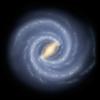
|
|||||

|
2008-07-10 |
Spitzer Space Telescope |
936x936x3 | ||

|
|||||

|
2008-10-27 | Epsilon Eridani |
Spitzer Space Telescope |
3000x1600x3 | |

|
|||||

|
2008-10-27 | Epsilon Eridani |
Spitzer Space Telescope |
3000x2400x3 | |

|
|||||

|
2008-12-10 |
Spitzer Space Telescope |
3000x2400x3 | ||

|
|||||

|
2009-01-05 |
Spitzer Space Telescope |
3000x2400x3 | ||

|
|||||

|
2009-01-05 | GD 40 |
Spitzer Space Telescope |
3000x2400x3 | |
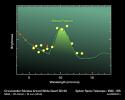
|
|||||

|
2010-02-03 | HD 189733 | 1088x745x3 | ||

|
|||||

|
2009-04-07 |
Spitzer Space Telescope |
3000x2400x3 | ||

|
|||||

|
2009-04-07 |
Spitzer Space Telescope |
3000x2400x3 | ||

|
|||||

|
2009-05-13 |
Spitzer Space Telescope |
3000x2400x3 | ||
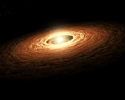
|
|||||

|
2009-05-28 | VB 10 |
PlanetQuest |
565x567x3 | |

|
|||||

|
2009-05-28 | VB 10 | 2400x3000x3 | ||

|
|||||

|
2009-05-28 | VB 10 | 3000x2400x3 | ||

|
|||||

|
2009-08-10 | HD 172555 |
Spitzer Space Telescope |
3000x2400x3 | |

|
|||||

|
2009-08-19 |
Galaxy Evolution Explorer (GALEX) |
3000x1800x3 | ||

|
|||||

|
2009-08-19 |
Galaxy Evolution Explorer (GALEX) |
2288x1144x3 | ||

|
|||||

|
2009-09-23 |
Spitzer Space Telescope |
3000x2400x3 | ||

|
|||||

|
2009-10-07 |
Spitzer Space Telescope |
3000x2400x3 | ||

|
|||||

|
2009-10-07 |
Spitzer Space Telescope |
3000x2400x3 | ||

|
|||||

|
2009-10-07 |
Spitzer Space Telescope |
1279x719x3 | ||

|
|||||

|
2009-11-03 |
IRAS |
1200x601x3 | ||

|
|||||

|
2009-11-17 |
IRAS |
1440x540x3 | ||

|
|||||

|
2009-11-17 |
IRAS |
720x540x3 | ||

|
|||||

|
2009-11-23 |
Spitzer Space Telescope |
3200x2400x3 | ||

|
|||||

|
2010-01-05 |
Spitzer Space Telescope |
4200x3300x3 | ||

|
|||||

|
2010-03-17 |
Spitzer Space Telescope |
4096x3072x3 | ||

|
|||||

|
2010-04-21 |
Spitzer Space Telescope |
3300x2550x3 | ||
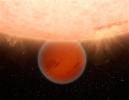
|
|||||

|
2010-06-01 |
Spitzer Space Telescope |
3000x2400x3 | ||
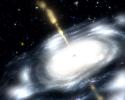
|
|||||

|
2010-06-24 |
Spitzer Space Telescope Wide-field Infrared Survey Explorer (WISE) |
3000x2400x3 | ||

|
|||||

|
2010-07-14 | 4000x2666x3 | |||

|
|||||

|
2010-07-22 |
Spitzer Space Telescope |
3000x2400x3 | ||

|
|||||

|
2010-07-22 |
Hubble Space Telescope Spitzer Space Telescope |
3000x2400x3 | ||
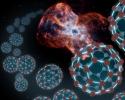
|
|||||

|
2010-07-22 |
Spitzer Space Telescope |
1280x717x3 | ||

|
|||||

|
2010-07-22 |
Spitzer Space Telescope |
1280x717x3 | ||

|
|||||

|
2010-08-26 | NGC 6791 |
Kepler |
3000x2400x3 | |

|
|||||

|
2010-10-12 |
Spitzer Space Telescope |
3872x2592x3 | ||

|
|||||

|
2010-10-19 |
Spitzer Space Telescope |
4096x3072x3 | ||

|
|||||

|
2010-10-19 |
Spitzer Space Telescope |
1281x720x3 | ||

|
|||||

|
2010-10-19 |
Spitzer Space Telescope |
3000x2073x3 | ||

|
|||||

|
2010-12-08 |
Spitzer Space Telescope |
3200x2400x3 | ||

|
|||||

|
2011-01-10 |
Kepler |
3600x2026x3 | ||

|
|||||

|
2011-01-11 |
Planck |
3000x1800x3 | ||

|
|||||

|
2011-01-12 |
Subaru Telescope |
1100x1100x3 | ||

|
|||||

|
2011-02-02 |
Kepler |
3300x2550x3 | ||

|
|||||

|
2011-04-08 |
Galaxy Evolution Explorer (GALEX) |
3000x2000x3 | ||

|
|||||

|
2011-05-19 |
Galaxy Evolution Explorer (GALEX) |
4096x3072x3 | ||

|
|||||

|
2011-06-30 |
Spitzer Space Telescope |
3500x2700x3 | ||

|
|||||
 |
 |
 |
 |
 |
 |
 |
 |
 |
 |

|
|
| 1-100 | 101-200 | 201-300 | 301-400 | 401-500 | 501-600 | 601-700 | 701-800 | 801-900 | 901-1000 |
| Currently displaying images: 1 - 100 of 1300 |